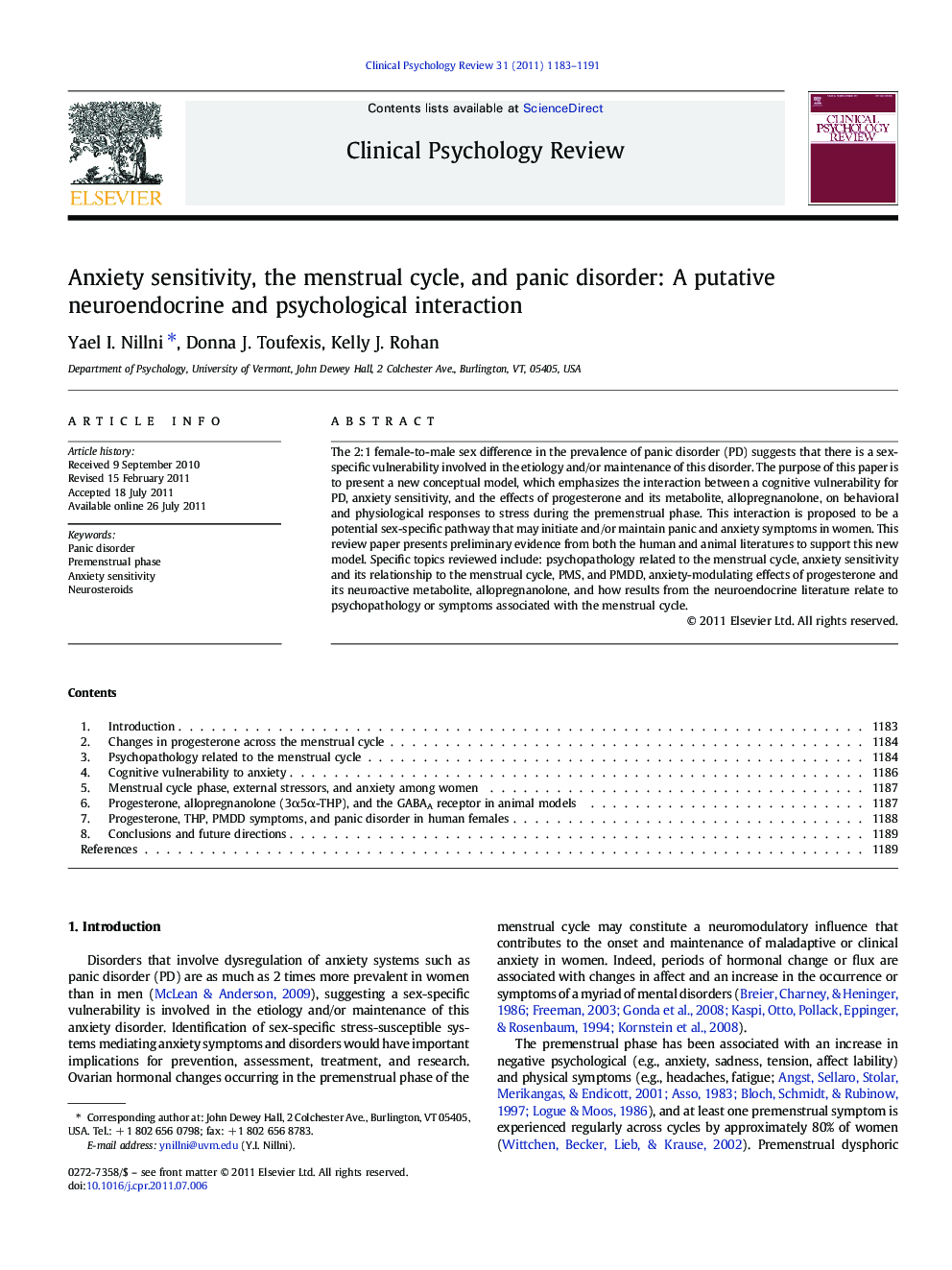| Article ID | Journal | Published Year | Pages | File Type |
|---|---|---|---|---|
| 903835 | Clinical Psychology Review | 2011 | 9 Pages |
The 2:1 female-to-male sex difference in the prevalence of panic disorder (PD) suggests that there is a sex-specific vulnerability involved in the etiology and/or maintenance of this disorder. The purpose of this paper is to present a new conceptual model, which emphasizes the interaction between a cognitive vulnerability for PD, anxiety sensitivity, and the effects of progesterone and its metabolite, allopregnanolone, on behavioral and physiological responses to stress during the premenstrual phase. This interaction is proposed to be a potential sex-specific pathway that may initiate and/or maintain panic and anxiety symptoms in women. This review paper presents preliminary evidence from both the human and animal literatures to support this new model. Specific topics reviewed include: psychopathology related to the menstrual cycle, anxiety sensitivity and its relationship to the menstrual cycle, PMS, and PMDD, anxiety-modulating effects of progesterone and its neuroactive metabolite, allopregnanolone, and how results from the neuroendocrine literature relate to psychopathology or symptoms associated with the menstrual cycle.
► The premenstrual phase is associated with increased negative psychological symptoms. ► Allopregnanolone, a neuroactive metabolite of progesterone, is a modulator of GABAA receptors. ► Allopregnanolone withdrawal paired with an aversive stimulus increases anxiety behaviors in mice. ► Menstrual cycle phase may influence reactivity to an external stressor in women. ► Anxiety sensitivity, ovarian hormonal changes, and stressors may interact to initiate/maintain clinical anxiety.
